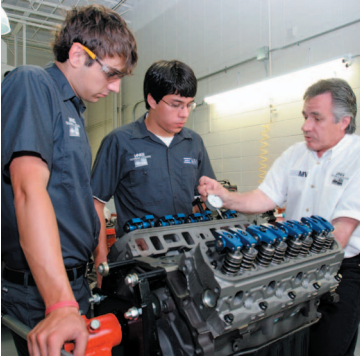
Workers and Productivity
American.gov | 2013-01-24 14:36

Workers at this Intel Corp. semiconductor plant in receive training and embrace change. (© AP Images/Paul Sakuma)
Numerous and efficient workers are crucial to U.S. economic success
(The following article is taken from the U.S. Department of State publication, USA Economy in Brief.)
“America's high standard of living is due to the fact that American workers are among the most productive in the world, and a greater share of the American population works than in many other countries,” according to the Council on Competitiveness.
Through most of U.S. history, the labor force grew steadily, sustaining economic expansion. Immigrants have been a major source of labor, tending to increase in number especially during times of low unemployment, when demand for workers goes up.
About 146 million people in the United States were working in paid jobs at the end of 2006, with another 7 million unemployed; the 153 million total makes up the world's third largest labor force, after China's and India's.
Nearly two-thirds of U.S. working-age people participate in the labor force. Males and females each account for about half. About 15 percent of them are foreign born. Some 5 to 6 percent of them work more than one job.
The private sector employs most U.S. workers, 85.5 percent, and governments employ the rest.
A lot of people are self-employed, more than 10 million in 2005, although some of them split their time between working for other people and for themselves. Most working people work for someone else in nearly 6 million U.S. companies. Most of these companies have fewer than 20 employees.
U.S. workers are flexible. Fairly steady growth in the number of jobs conceals a lot of churning – people changing jobs. Most years, on average, 10 percent of jobs disappear while a somewhat larger proportion is created.
"The data show that each month millions of Americans leave their jobs – most of them voluntarily – and millions more are hired," Robert Kimmitt, deputy secretary of the U.S. Treasury, wrote in 2006. "This is what we want: an economy in which people looking to move up have as many opportunities as possible from which to choose."

Georgia students receive training to become skilled auto technicians on race car crews. (© AP Images/Gene Blythe)
U.S. workers do not typically endure long-term unemployment. In 2005 only 12 percent of unemployed U.S. workers could not find work within a year, compared to 46 percent in the European Union.
Contributing to U.S. workers' productivity has been the emphasis on education, including technical and vocational training, as well as willingness to experiment and change.
Change includes Americans' willingness to move from place to place to find work. In the 18th and 19th centuries, people moved from the coasts to the interior to till new farmland. In the early 20th century, African Americans moved from farms in the South to find factory jobs in northern cities.
Not all workers leave jobs voluntarily, of course. Mass layoffs by big companies occur commonly – 13,998 companies reported mass layoffs during 2006. From late 2005 through early 2007, the Big Three U.S. automakers – General Motors Corporation, Ford Motor Company, and DaimlerChrysler AG – eliminated more than 90,000 U.S. jobs. U.S. airlines laid off 170,000 workers from August 2001 to October 2006.
Although U.S. workers have long had the right to organize, only 12 percent of them were labor union members in 2006, down from about 35 percent half a century earlier.
The biggest group of U.S. workers comprises nearly 23 million in office and administrative support jobs, such as telephone receptionists, secretaries, and hotel clerks. The groups of workers getting the highest average wages, more than $80,000 a year, have jobs in management and law. The people getting the lowest average wages, less than $20,000 a year, work in food preparation and service.
And what role does government play in the U.S. economy?
Share this page



















